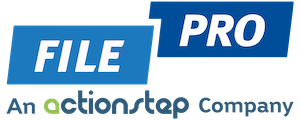The meeting with that prospective client went well, and the signs are pointing to yes for some matters to head your way.
But – groan – they’ve just asked you to ‘send over your law firm’s capability statement’ so they can show a few colleagues before they make a decision.
You have the capability to deliver for this client; but how to articulate it?
What a capability statement is not
Firstly, let’s be clear, a capability statement is not a shortcut to developing a trusted relationship, authentic rapport or winning work from prospective clients.
Over the years our research has shown time and again the most effective BD activities for professional services firms are in-person or face-to-face namely: referral relationships and networking.
Referral relationships and networking were consistently cited by respondents as the two most effective marketing and BD techniques to stimulate new business for their law firm.
Admittedly this has been nigh on impossible since the emergence of COVID-19, but if you can safely – ‘face-time’ – is the best and quickest way to make a positive and powerful impression with prospective clients.
In the business development activity mix, a capability statement acts as a ‘tangible’ in positioning you for work and backs up those positive face-to-face interactions. High-quality tangibles are important in the world of complex intangibles that is legal services.
So, while important, a capability statement is unlikely to ‘close a sale on its own and should be treated as just one further interaction on the way to creating a client service relationship.
As one respondent noted in our referrals research study:
‘Personally, I think capability statements are an excuse not to have a conversation with our client.’
I like to think of capability statements as a step up from providing a business card, and a step back from providing a fully tailored (fee) proposal addressing specific needs. Think of it as more an extended brochure that is lightly tailored, or as a free-form proposal (especially if you have few insights into that prospective client and they’ve not provided a ‘spec’ to work from).
Best practice tips for capability statements
With that in mind, if you have determined that providing a capability statement is the next best step to moving your business relationship forward here are a few dos and don’ts to keep in mind.
What should appear in your capability statement?
Always consider your (time-poor) audience; brevity is the order of the day!
The best approach is to keep the topic or subject area tightly focused. Do not try to cite all the different types of legal work you do, every single legal team member or case ever completed.
Capability statement content should include:
- A clear headline and snappy opening paragraph directed to a key client appeal, not something no one wants to buy: ‘General Commercial Litigation. Instead, try something more targeted: ‘Small business dispute resolution’
- Branding consistent with your other marketing communications (website, letterhead and so on)
- Succinct and clear descriptions or punchy lists of your services to help with scanability
- Facts and statistics on excellent outcomes
- Copy that appeals to a targeted audience and avoids generalisations
- Copy that focuses on the client’s perspective and frames your capabilities through:
- The value that your work adds
- Problems you are in demand to solve
- The differences they’ll notice working with you, and your firm.
- Third-party evidence: client testimonials, awards, rankings, memberships, other accolades
- Thumbnail bios of team leader/s (include direct contact details and invite them to connect on LinkedIn with your team)
- Clear contact details including web, LinkedIn and Twitter (you can ditch the fax number)
- Optional extra: some sort of special offer, limited time enticement, or another call to action.
What format is best for a capability statement?
We recommend capability statements are between 2 – 8 pages in length.
A document that can be quickly and universally edited is usually most effective. Investing in a high-quality and smart-looking branded MS Word template can give you a high-end polished look with the freedom and flexibility to update and lightly tailor content to each opportunity rather than always having to involve a graphic designer. MS PowerPoint can also be a convenient format, especially if your text is short and punchy and you are confident with the selection and application of imagery and graphic elements.
Once you have a smart and up-to-date capability statement look you can then print on high-quality paper and produce on-demand if you must have hard copies.
You can also consider creating variants – one-pagers for each practice area or client sector that can be interspersed with other material to act as a suite of selling documents e.g. if providing a bigger information pack to a prospective client or some takeaway material following a seminar.
Definitely do not mass produce with an off-set printer thousands of capability statement ‘brochures’ that will become quickly dated and take up room while gathering dust.
You should also consider some of the other low-cost presentation tools and digital formats at your disposal these days such as Canva, Prezzi or even video as well as your website to introduce your team and services.
Pro tip: consider creating a series of ‘virtual cap stats’. This is as simple as crafting some standard email message templates that you then hyperlink to various relevant pages on your firm’s website where interested recipients can easily click to read more on the items that interest them.
What next? How to follow up on a capability statement
We see a lot of professionals having sent a capability statement passively wait… many are actually terrified to pick up the phone.
Remember, a capability statement can only do so much of the talking, rapport building and heavy lifting in relationship establishment.
Appropriate questions for your follow-up phone call might include:
- ‘Did we send enough information…what’s the timing on your decision-making process…can we get something in the diary for…what are some other ways we can keep in touch…’
- ‘When suits you for a catch-up….can we get something in the diary…?’
In order to ‘get’ you have to ‘give’ and it can be a long game
The most effective capability statement follow-up also offers further value, you might arrange a meeting or even better call it a ‘working session’ to:
- demonstrate a tool or technology you have that is useful
- workshop a business problem they have
- perform a mini-review of a problem area
- walk through a high-level strategic approach you can deliver that will add value or provide a competitive edge or increase their effectiveness.
These are all valuable and legitimate reasons for prospective client and their team to spend more time with you. Far better than a lame ‘I want to learn more about your business.
Better than a capability statement: shareable and engaging content to win hearts and minds over time
Enduring, relevant and valuable content with impact!
I often say:
‘Business development is not a one-off event but a process.’
Many mistakes ‘doing’ a cap stat/brochure as ‘doing marketing and developing business. Let’s be clear – agonising for weeks via a committee and tortuous approval process over the development of a static piece of printed content (like a capability statement) is not the best approach to winning in a dynamic and digital world.
Better use of your team’s time would be to do some standout thought leadership like:
- research into a sector of interest to your clients that no one else will have – you can share your findings in a short report, send copies to people in your network, get trade press and media attention, and create a social media campaign around the research to gain further positive attention and really leverage your investment
- an annual white paper wrapping up the year’s developments with commentary and insights
- producing semi-regular blogs or e-alerts with a particular industry, sector or issues focus (e.g. Franchising disputes – pitfalls to avoid; or Everything you need to know about trusts for high net worth individuals)
- hosting or sponsoring a symposium or other signature event for your target industry sectors
- creating an infographic distilling important facts and figures on a hot issue
- writing a section of frequently asked questions with your answers that can appear on your website.
You’re far more likely to stay top of mind (on and off-line) if you’re regularly sharing useful content with your audience (and handily positioning yourself as the expert in the meantime) than just sending out a capability statement that screams ‘me, me, me’ and doing it just the once then ‘hoping to hear’.
Once you have built up a repository of useful material online you’ll be web searchable and rank well in search results for that expertise, problem-solving and value (and use those links in your virtual cap stats).
That aside, even though our world is increasingly digital sometimes professionals really do just need to look at the ‘part on paper’.
So, if you really must produce a firm capability statement (or brochure or flyer) keep the above in mind (especially the follow-up!) and you’ll find your efforts resonate better with your target clients and markets.
About the Author
 Amy Burton-Bradley is an experienced bidder, business developer, marketer, and copy-writer who has worked with more law firms than she cares to remember! She is a Partner and Consulting Director at Julian Midwinter & Associates, a business development consultancy whose team has helped law firms attract, win, grow, and retain new clients and business since 1993. For more law firm business development tips check out JMA’s blog at julianmidwinter.com.au.
Amy Burton-Bradley is an experienced bidder, business developer, marketer, and copy-writer who has worked with more law firms than she cares to remember! She is a Partner and Consulting Director at Julian Midwinter & Associates, a business development consultancy whose team has helped law firms attract, win, grow, and retain new clients and business since 1993. For more law firm business development tips check out JMA’s blog at julianmidwinter.com.au.

